
views
Weighing a Small Dog
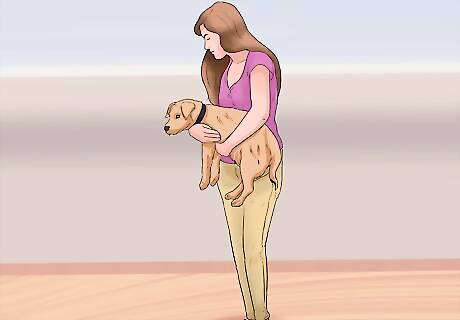
Pick up the dog. If you can comfortably lift your dog, you can weigh it with a standard bathroom scale and some simple subtraction. Just pick your dog up in your arms and hold it tightly so that it can’t wiggle around and jump (or fall) to the ground. Hold your dog with both arms, close to the center of your body, as if you were picking your dog up to give it some affection. This is not a good idea if you struggle with lifting heavy objects or have some health restrictions that prohibit you from lifting things.

Step onto a scale. Get on the scale and wait a few moments for the scale to register the weight. Look down, view the number, and record the weight it displays. This is the total weight of you plus your dog. Be careful to keep a tight grasp on your dog the entire time. You don’t want to accidentally drop your pup if it wiggles in your arms.
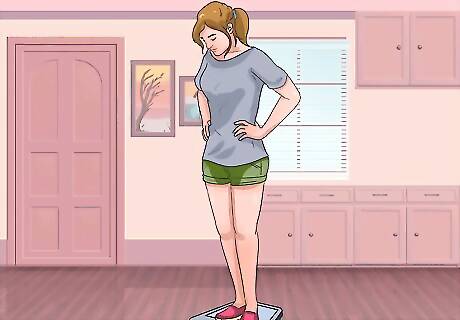
Weigh yourself without the dog. Let your dog down off the scale and then step onto the scale by yourself. Record your weight while standing alone on the scale. Give the dog a treat for cooperating to encourage him to stay still next time.
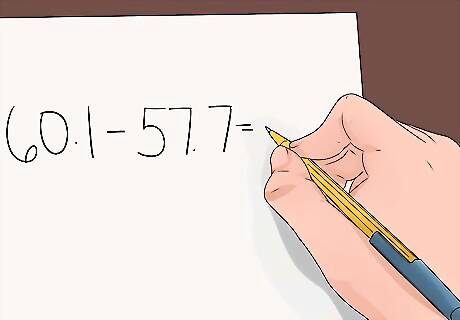
Subtract your weight from the first measurement. Take the total weight (you plus your dog) and subtract your individual weight. The answer is your dog's weight. For example, if the total weight (you and your dog combined) is 215 pounds and your individual weight is 187 pounds, you’ll perform this equation: 215 minus 187. The answer is 28 pounds, the weight of your dog.
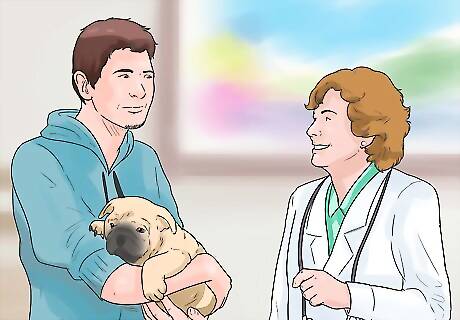
Compare this to the ideal weight. Your veterinarian should be able tell you the “target weight” for your dog’s breed. If your dog is purebred, you can also compare your dog to breed standards published on the American or British Kennel Club websites. These standards will also give you the typical weight range for males and females of that breed. Keep in mind that these standards are the average for “show quality” dogs, and that unusually tall or short dogs may not fall into these weight ranges. If your dog is a mix of two breeds with a similar ideal weight, aim for that general range. If your dog is a mix between several breeds, consider the ideal weights of the breeds that the dog looks most similar to in size and appearance.
Weighing a Large Dog

Build a platform over your home scale. If your dog is too heavy for you to pick up, you can still use a home scale with a little preparation. Place a large, stable container on the scale, or make your own platform from plywood, rigid foam, or plastic. Place this so the scale supports the entire platform, then cut out a window so you can read the display. Now you can still use a home scale to weigh your big dog. Follow these steps: Coax the dog onto the platform and have it sit down in a steady position. Record the weight displayed on the scale. Move the dog off the platform. Record the weight of the platform alone. Subtract the weight of the platform from the first measurement. This is the weight of your dog.

Take your dog to a bus station instead. If you don’t have a scale at home, or you can’t get your dog to use the platform method, try taking your dog to a bus station. Put on the leash and take your dog to a long-distance bus travel station – Greyhound is an appropriate choice. These stations have oversize scales to weigh luggage, though you may need to sweet talk the employee at the counter. Consider bringing a small coffee gift card or similar token of appreciation for the favor.
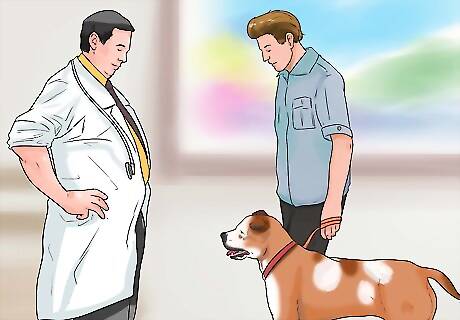
Bring the dog to a veterinarian. Call up the receptionist or vet tech at your veterinarian and ask if you can use the scale at the office. If you find a nice employee, you might be able to pop in and use the scale without paying for an appointment. If your vet is a stickler for following the rules, you may need to just bite the bullet and schedule an appointment with your vet to find out your dog’s official weight.

Find your dog's ideal weight. For best results, have a veterinarian examine your dog and recommend a goal weight. You can find weight recommendations for each breed online, but these are not always accurate for your dog, especially if he is a mixed breed. Talk to your vet about your dog’s weight and ask if they have any recommendations for diet and exercise.
Checking for Signs of Unhealthy Weight
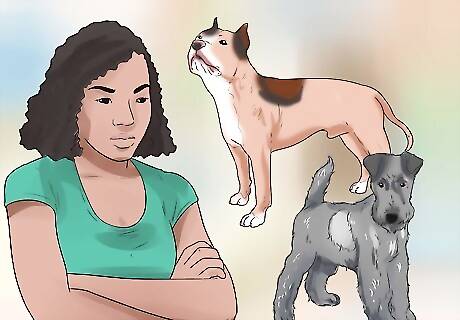
Learn about your breed's body shape. Hounds, setters, and other hunting dogs tend to be naturally thin. Other breeds look stocky even at a healthy weight, including Rottweilers, bull dogs, and Labradors. Some dogs are very tall, lanky, and skinny. Others are large and stocky. Most recommendations for monitoring a dog’s weight are based on dogs whose body types fall somewhere in between these extremes. You'll be able to judge more accurately if you know your dog breed's normal body shape.

Look for the rib cage. As a rule of thumb, a dog at the correct weight should not have any ribs showing when it is standing straight, but some ribs will show when the dog is curled up. If you can see the ribs when it is standing straight, the dog may be underweight. If you can't see the ribs when the dog is curled up, the dog is likely overweight. This can be difficult to judge for shaggy dogs, or for some breeds with unusual body shapes, such as English bulldogs and whippets.

Feel the fat over the ribs. When palpating the rib cage gently with your fingers, you should be able to feel the ribs under the skin, but only slightly. If you cannot feel your dog’s ribs, it is overweight. If you can feel the ribs easily and there's little fat over them, the dog is probably underweight. You should also be able to feel the top of the breastbone by pressing lightly.

Look at your dog's figure. Stand right behind your dog while it is standing up, looking down at his back. The width of the dog should get narrower from the shoulders and rib cage, as you move down the dog's back. You should be able to see the waist easily, narrowing right before the hips. If you cannot see the waist, your dog is overweight. If the hip bones stand out sharply, take the dog to a vet. This could be a sign of a health problem.

Use caution when judging by belly size. In younger dogs (under seven years old for most breeds, under four for giant breeds), the abdomen should be “tucked” slightly higher than the rib cage when viewed from the side. The depth of this “tuck” depends on the dog’s breed, so again, consult breed standards and view lots of pictures before performing a visual evaluation. As dogs age, their abdominal muscles weaken just as humans’ do, giving them a “potbelly” that may mislead you about their weight. Generally, when the dog lies on her side, the stomach should be even with her rib cage. The dog's belly will look larger after a meal.

















Comments
0 comment